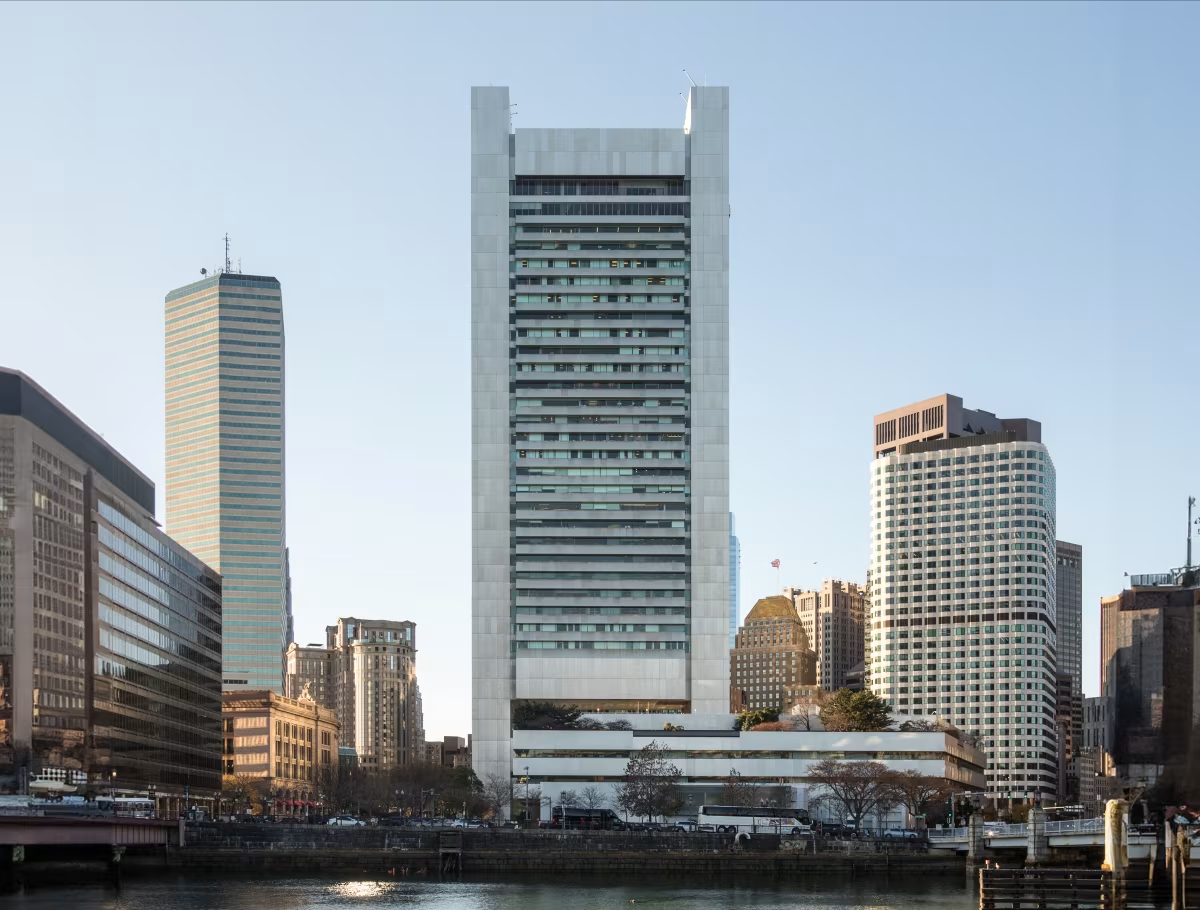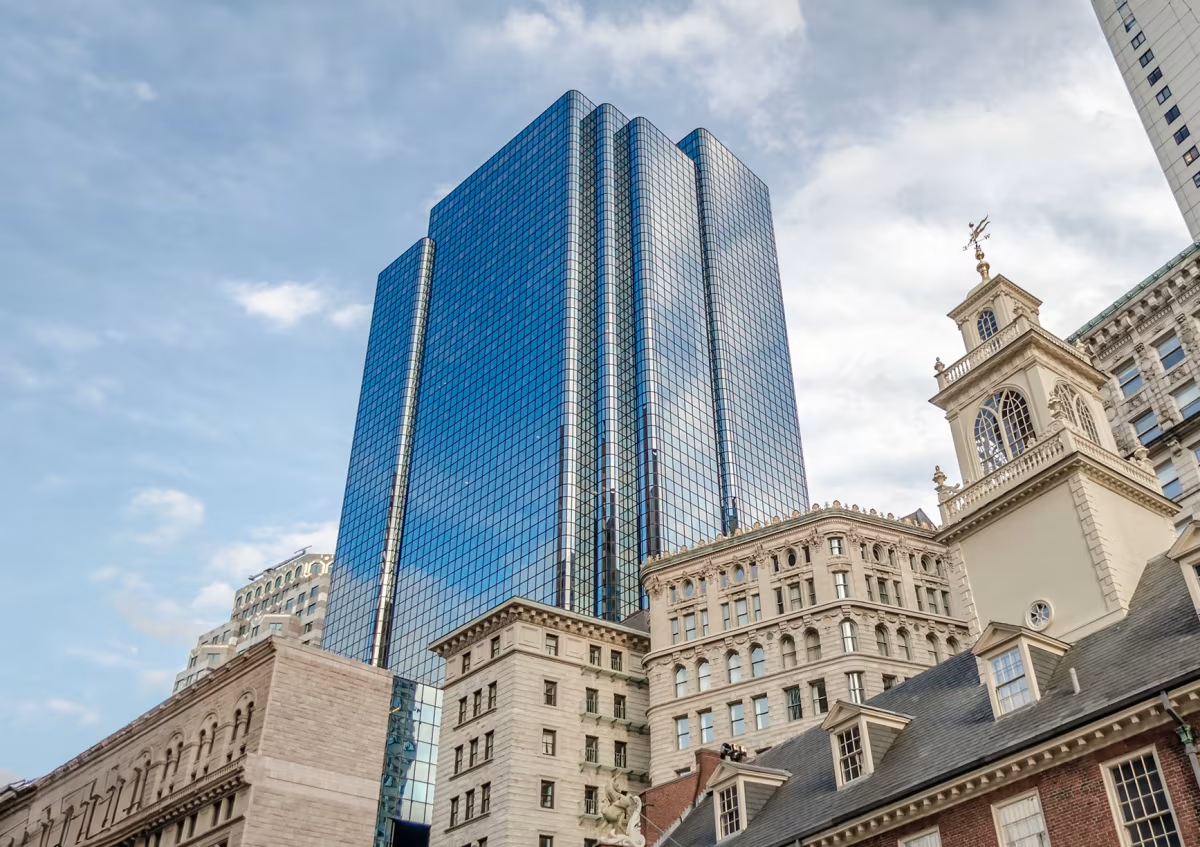Federal Reserve Bank Building vs Exchange Place Building


Comparing the Federal Reserve Bank Building and the Exchange Place Building is interesting because they both rise in Boston, MA, yet they were conceived by two different design teams, Stubbins and Associates and WZMH Architects, and were completed at different points in time. They were finished more than 7 years apart.
This contrast within the same city allows us to see how different creative minds interpreted the evolving needs of Boston across time.
Let's take a closer look!
Height & Size
These two towers present an interesting contrast in their proportions. The Federal Reserve Bank Building rises higher at 614ft (187m), while the Exchange Place Building reaches 509ft (155m). However, the Exchange Place Building accommodates more floors with 40 levels above ground, compared to 32 floors in the Federal Reserve Bank Building.
This suggests different approaches to interior space design. The Federal Reserve Bank Building has an average floor-to-floor height of approximately 5.8m, while the Exchange Place Building has more compact floors averaging around 3.9m each. The taller building's more generous floor heights might indicate grander interior spaces, higher ceilings, or different programmatic requirements.
These different proportions likely reflect the specific needs each building was designed to serve, whether driven by zoning regulations, client requirements, or the intended use of the spaces within. The contrast shows how architects can achieve different spatial experiences even when working with similar overall building scales.
Architectural Style
Both the Federal Reserve Bank Building and the Exchange Place Building were designed in line with the aesthetic conventions of the Postmodernism style.
At the time, this style was at the height of its popularity. So both Stubbins and Associates and WZMH Architects followed what was in many ways expected of them, producing designs that fit comfortably within contemporary architectural norms, rather than breaking with convention.
Uses
Both the Federal Reserve Bank Building and the Exchange Place Building were designed to serve as commercial towers, and that has remained their main use since their completion, serving similar roles in the urban fabric.
The Exchange Place Building also provides 126 parking spaces.
Structure & Facade
These two towers illustrate the many possible ways to combine structure and enclosure in skyscraper design.
| Federal Reserve Bank Building | Exchange Place Building | |
|---|---|---|
| Stubbins and Associates | Architect | WZMH Architects |
| 1969 | Construction Started | 1981 |
| 1977 | Year Completed | 1984 |
| Postmodernism | Architectural Style | Postmodernism |
| Commercial | Current Use | Commercial |
| 32 | Floors Above Ground | 40 |
| 187 m | Height (m) | 155 m |
| Frame | Structure Type | Frame |
| Steel | Vertical Structure Material | Steel |
| Reinforced Concrete | Horizontal Structure Material | Concrete And Steel |
| The Federal Reserve Board | Developer | Brookfield Properties |
| R.G.Venderweil Engineers | MEP Engineer | TMP Consulting Engineers Inc |
| MA | State | MA |
| Boston | City | Boston |
| 600 Atlantic Avenue | Address | 53 State Street |